Hell and Back Read online
Page 17
How did the Italian referendum end? At midnight on election day, forecasts suggested 52% of the population had voted, 91% of whom supported the British system. Little over an hour later, the official result came. Only 49.6% had voted. The referendum was void. The following morning the government announced that it would persist with a project to introduce the French system of two ballots. At once, and across the political spectrum, smaller groupings announced their opposition, preferring the German proportional system with a 5% threshold. The Northern League immediately declared who they would ally with to be sure of overcoming the threshold. Even when bombarded with promising foreign coconuts, a national mindframe, it seems, dies hard.
Literary Trieste
[Svevo, Joyce, Saba]
Trieste is hardly on the beaten track for Italophiles. Almost a hundred miles east of Venice and on the wrong side of the Adriatic it seems to gaze back at the bel paese instead of being a part of it. It has no great art galleries, museums or monuments. The weather is notoriously harsh. Even identity is a problem: a windswept stone’s throw from the Slovenian border, Trieste is home to three distinct ethnic groups: Slav, Germanic and Italian.
‘I am Slavic-German-Italian,’ wrote Scipio Slataper, the first writer to claim (around 1910) that there was in fact a ‘Triestine type’.
From my Slav blood I have within me strange nostalgias, a desire for novelty, for abandoned forests, a sentimentality (or sensibility) that demands caresses, praises: an infinite limitless dreaming. From my German blood I have my mulish obstinacy, my dictatorial will and tone, the certainty of my plans, the boredom I feel at having to accept discussion, my desire for domination, for exertion. These elements are fused in the Italian blood which seeks to harmonise them, to balance them out, to make me become ‘classical’.
The local intellectual Roberto Bazlen was more sceptical, writing:
A melting pot is a utensil into which are put the most disparate elements, which are then melted; what is produced is a homogeneous fusion, with all its elements proportionately distributed, with constant characteristics. But in Trieste, as I know it, a fused type has never been produced, nor any type with stable characteristics […] And since a unique Triestine type does not exist, so a Triestine creative culture does not exist either.
His contemporary and fellow citizen Giani Stuparich agreed:
there is something in this city of mine that blocks any initiative designed to give it a cultural character or physiognomy, not only in its disintegrative atmosphere but in its individuals, who willingly isolate themselves or go elsewhere. It has a bitter air …
Yet in the early years of the twentieth century, the small and troubled town of Trieste was home to three writers who would later be designated great: Italo Svevo, James Joyce and the poet Umberto Saba.
Of course writers and above all groups of writers tend to encourage mythologies about themselves, their lives and achievements: Gertrude Stein and her school, Ezra Pound, Ernest Hemingway. And readers too are often eager to surround the texts they love with anecdotes, and to attribute remarkable qualities to the authors they admire.
In Trieste, a port city with an uneasy history of difficult allegiances and blurred racial boundaries, the question of identity and ethnicity was bound to play a part in the formation of such mythologies. Hence it’s hardly surprising, for example, that both Svevo and Saba are pseudonyms, and that the names should be the starting point for a great deal of literary speculation. Was Ettore Schmitz, alias Italo Svevo, who was educated in German, grew up speaking Triestine dialect and indeed lived most of his life under Austrian rule, really an Italian writer? Was his style, as some contemporaries suggested, perhaps more Slav than Italian? Would he have done better, as Umberto Poli, alias Umberto Saba, thought, to have written in German? And did Saba’s own problems of identity (he changed pseudonyms more than once) arise not only out of the early desertion of his father, but partly from the curiously mixed ethnic origins of the Jewish mother and aunts and the Slovenian nurse who brought him up, and from the uncertain identity of a city he was so determined should be Italian? Finally, could it have been precisely the uneasiness of this local situation and the fierce desire of the local people to be liberated from an imperial power that made the Irish exile, Joyce, feel at home in Trieste for ten long years?
These are questions that loom large in Joseph Gary’s book, A Ghost in Trieste. Behind them lies the more general but ever intriguing conundrum, How much does the spirit of a particular place at a particular time inform and shape the novels and poems written there, and how anyway could such influence be measured and savoured?
Yet Gary’s book is slow to home in on its subject. As a guide and critic he proceeds on the principle that indirections will eventually find directions out, and although some of the consequent meandering does have its charm, it must be said that much is sentimental and self-regarding. T went to Trieste because I hoped to find my business there,’ he tells us in his ‘preliminary’.
A notion for a book, Literary Trieste, was in my head, and I felt that going there would translate this notion into a clear and spurring idea …
I drew a beautiful equilateral triangle in my notebook and wrote ‘Trieste 1905-15’ beneath it. Trieste was the key.
All too soon, however, he discovers that Trieste is a modern town not unlike many others, that Joyce and Svevo’s relationship was not after all very much more than that between any young language teacher and his older pupil, that Svevo met Saba only rarely and with no more than tepid cordiality, and that Saba, so far as we know, never met Joyce at all. His desire for an easy mythology, or literary salon to exhume so immediately thwarted, Gary then embarks on pages of wistful self-irony which tell us little about either Trieste or the writers whose relation to the city we are interested in, and rather more than we would care to know about Gary’s sense of himself as travel writer manqué:
In the Cinema Eden I sat through 101 Dalmatians wondering what they made of it in Dalmatia. Ghost-wise I petered past as a pretty blonde peered through a crack in the green canvas at a tennis match on the court behind Villa Necker. For hours and hours, the louvers of my darkened hotel room cut street-lamp light into thin orange stripes across the ceiling. They rippled when a car passed.
Finally, it occurs to him to see himself as a ghost wandering through Trieste in search of an ever elusive literary past, a quaint image but hardly an encouraging one for those of us expecting to hear more of Saba, Svevo and Joyce. At other moments Gary seems to forget his literary interests altogether: ‘This is a book about Trieste: its curious history, some of its residents, some of my stumbling steps to get a view of it.’ How long exactly did this adventure last? ‘My three weeks in Trieste have been distributed over five years with long intervals at home …’
If readers were puzzled by the adjective ‘beautiful’ used to describe the hand-sketched equilateral triangle earlier on, they will no doubt be even more perplexed by that “long intervals at home’. More surprising still is the way it does not occur to Gary that to acquire the kind of deep sense of place and local character which might shed some light on the way the city influenced its writers, a critic might want to stick around for three months, or three years, rather than three weeks.
These irritations have to be mentioned, but fortunately, once Gary has got his self-indulgent comments on travel out of the way and begun to concentrate on this history of the city and the relationship of that history to its artists and writers, then his book becomes fascinating. We hear of Trieste’s early development as a Roman garrison town, its struggle to survive through the Dark Ages and its unusual decision to offer itself to the Austrian crown in return for protection. We discover that it was the enlightened if never altruistic strategy of successive Austrian emperors that led to the city’s rapid development as a southern port of central Europe, to the point where, in the late nineteenth century, it was second only to Marseilles. Most of all, Gary gradually and thoroughly establishes the huge irony that w
hereas Trieste’s economic prosperity depended on its connection with Austria and the north, the predominantly Italian identity of its people and the rising tide of nationalism which swept through Europe in the mid-nineteenth century inevitably pushed the city towards union with Italy in the west.
Thus the first decade of the twentieth century, when Joyce and Saba and Svevo were all in the city at the same time, was a fascinating one. Trieste was at the height of its commercial success, but the very energy generated by that wealth went to feed a passionate Italian nationalism which, in achieving its end, would ultimately destroy the city’s wealth by cutting it off from Austria and its hinterland. Gary is at his best here, weaving together an excellent series of quotations to show how artists, poets and novelists reflected this nationalism in their writing. From Carducci through the predictably flamboyant D’Annunzio, the rumbustious critic Scipio Slataper and the futurist Marinetti, what is extraordinary is the vehemence, eloquence and, sometimes, thank God, wit, with which this nationalism was expressed. Slataper, who died fighting on the Austrian-Italian frontier in 1915, is particularly attractive when he imagines Trieste’s discovery of its national and cultural identity as that of an ingenuous young Parsifal,
who awakened one day between a crate of lemons and a sack of coffee beans thinking that, for his own good, he ought to modulate his life to another rhythm than that of a snorting or puffing engine, treat it to another melody than that of silver clinking in the pockets of some capacious waistcoat.
That is, he should look to Italy. Marinetti, on the other hand, is merely frightening. In the amazingly titled War, Sole Hygiene of the World (1910), he apostrophises Trieste as follows:
You are the scarlet, violent face of Italy, turned toward the enemy! … Trieste! you are our sole shield! … Do not forget O Trieste, that the Italian peninsula has the form of a dreadnought, with a squadron of torpedo-boat islands.
The passage vaguely echoes, D’Annunzio’s notorious ‘Ode To a Torpedo Boat in the Adriatic written almost twenty years earlier:
Steel ship, straight, swift, flashing
beautiful as a naked weapon,
alive, palpitant
as though metal enclosed a terrible heart.
By the end of the poem D’Annunzio leaves us in no doubt that that naked weapon is pointed in the very specific direction of Austrian-controlled Trieste.
But it is not so much the warmongering of the literary intelligentsia that is surprising and sobering here as the realisation that only a hundred years ago European culture was still based primarily on the written word, and a poet could still see himself as having a formidable and immediate political part to play. Just a few years before the movies would become ubiquitous, a few decades before television, the time of Joyce, Saba and Svevo in Trieste marked the last years of the word as unrivalled manipulator of public feeling. As if in valedictory homage to that power, or demonstration of the prophetic and political vocation of the poet, the transfer of Trieste from Austrian to Italian sovereignty was effectively confirmed by the arrival in the port of a torpedo boat, the Audacious.
So much for the fervid literary and political scene. Yet as we read through Gary’s carefully chosen quotes we gradually become aware of the absence of any contribution from Joyce, Saba or Svevo. True, Joyce, while in Trieste, gave one or two lectures on Irish history where clear parallels were drawn between Britain and Austria as imperial oppressors. True, Svevo remarked that it was the coming of Italy to Trieste that gave him the inspiration to write his last and greatest novel, La coscienza di Zeno. True, Saba later spoke of having ‘married [Trieste] to Italy for ever with my song’, but he was clearly speaking more of having been the first to write poetry on the city in a ‘proper’ Tuscan Italian than of having contributed to nationalist propaganda. For the fact is that none of these writers had anything at all to say in their creative work about the political issues that were exciting the other writers round about them.
In his indirect style Gary thus appears to stumble on the central point of his book when remarking that a literary history of Trieste and Istria, written in 1924 by a professor at the newly established University of Trieste, includes neither Saba nor Svevo. Gary comments: ‘It is the total absence of anima patria in the novels of Svevo … and in the poetry of Saba … that accounts for their absence from the pages of Storia letteraria di Trieste e dell'Istria.'
Exactly. And we begin to see that it was the creative isolation of these three writers that distinguishes them. For all their living in a very particular place at a very particular moment, they had nothing in common with the local literary scene and very little with each other. For Joyce, the most important thing about Trieste was that it was not Dublin. He arrived there by accident. He found he was able to borrow money and to work (teaching English). It was enough. He was obsessed with words, with style, with the extent to which words can evoke a world, create a world, many worlds, most of all the world of Dublin, where he never wanted to live again. To a very great extent he must have lived in those worlds of words (since in another way he never left Dublin at all). Svevo’s description of his teacher, written as an English homework assignment, is pertinent here:
When I see him walking on the street I always think that he is enjoying a leisure, a full leisure. Nobody is awaiting him and he does not want to reach an aim or to meet anybody. No! He walks in order to be left to himself. He also does not walk for health. He walks because he is not stopped by anything. I imagine that if he would find his way barred by a high and big wall he would not be shocked in the least, he would change direction and if the new direction would also prove not to be clear he would change it again.
Thus, when Trieste was closed to Joyce with the arrival of the First World War, he continued his walks in Zurich, and later Paris. Nor is there any indication that leaving Trieste affected his writing. If Molly could say of Leopold just before she decided to take him, ‘well, as well him as another’, certainly Joyce could have said the same of the cities he lived in after Dublin.
For Svevo, on the other hand, as Gary sensibly points out, Trieste was merely home, a place he had no quarrel with, a place above all for work. If the city comes through at all in his novels, which despite being set in Trieste rarely mention or describe it, it is in the world of work, the shipping and commerce that all his characters are involved in, as indeed was Svevo himself. The observation points up the fine irony underlying the now traditional linking of Joyce and Svevo’s names. For the two could scarcely have been more different: the Irishman living in Trieste, but meticulously describing, recreating his home town of Dublin, the Triestine happily at home but apparently uninterested in the city round about him. Joyce, the avant-garde aesthete, the stylist par excellence, was searching for new techniques, new games, new languages. Svevo, for his part, is quite embarrassingly inept as a stylist, to the point where, on reading him in Italian one occasionally has to look at a sentence very hard indeed before understanding it, and this is not because of some effect the writer was aiming for, but out of sheer clumsiness.
Was this perhaps the essential aspect of the Triestine influence on Svevo, this writing in a language that was not really his own? Certainly, of all the serious novelists I have read, Svevo seems the least interested in drawing deeply on the resources of language to enrich his vision. Rather, Italian is a medium he uses as best he can to get across a brilliantly comic and perceptive succession of thoughts and actions that continuously unravel the perversity of his characters. When Joyce apparently told Svevo that ‘there are passages in Senilità that even Anatole France could not have improved’, he was either lying (to flatter) or simply had not appreciated why he liked the book, or has been misreported. And if La coscienza di Zeno is Svevo’s best book, it is perhaps because by adopting the first person he makes the clumsiness of his Italian, and the constant strain in it, a reflection of Zeno’s own curious mix of effort and buffoonery, the confusion of a man who tries so hard, and so hopelessly, to be morally healthy. T
he final irony, however, of all the fashionable criticism of Svevo’s Italian is that he is now by far the most readable, and particularly in translation, of all his Italian contemporaries. Their D’Annunzian grandiloquence seems so egregious beside his simple, if occasionally awkward, dispatch.
Saba (1883-1957), a lyric poet who moved to Florence to improve his Italian, but then wrote many of his poems about Trieste and eventually returned to live there, is a very different, perhaps even ‘opposite’ case. Towards the end of his book Gary offers translations of extracts from the writers he has talked about, plus two of Joyce’s Pomes Penyeach, translated into Italian by Montale. One is struck how well Svevo and Slataper come across, how poorly Saba. ‘Poetry,’ as Paul Celan said, ‘is the fatal uniqueness of language,’ and for Saba the exact register and semantic range of each word, the exact rhythm of the line and arrangement of the syntax are all-important. Read in the Italian, which Gary wisely leaves alongside, the spareness and hard-earned intensity of his verse is immediately apparent. Transferred into a would-be poetic English, it disappears. The subject of the poems Gary chooses to quote is Trieste, its streets, its bars, its people, but one soon appreciates that the city is above all a mirror of the poet’s mood, a source of consolation for his suffering, material for the constant reinvention of that wisely dying fall which is Saba’s voice.

 The Hero's Way
The Hero's Way Italian Neighbors
Italian Neighbors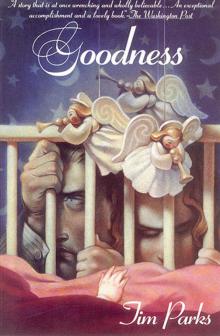 Goodness
Goodness Italian Neighbours_An Englishman in Verona
Italian Neighbours_An Englishman in Verona Italian Neighbours
Italian Neighbours Juggling the Stars
Juggling the Stars Cara Massimina
Cara Massimina Cleaver
Cleaver Where I'm Reading From
Where I'm Reading From Dreams of Rivers and Seas
Dreams of Rivers and Seas The Fighter
The Fighter In Extremis
In Extremis Painting Death
Painting Death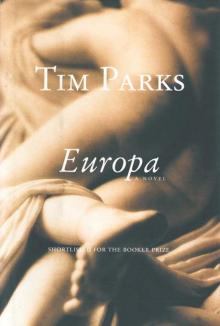 Europa
Europa Hell and Back
Hell and Back Judge Savage
Judge Savage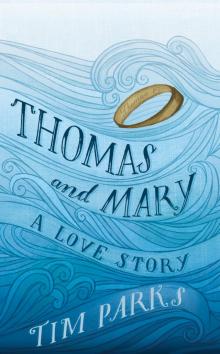 Thomas and Mary
Thomas and Mary Italian Ways
Italian Ways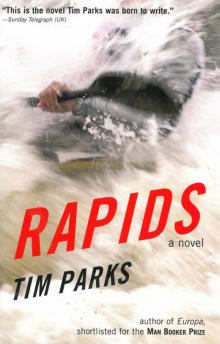 Rapids
Rapids Mimi's Ghost
Mimi's Ghost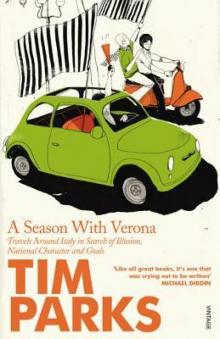 A Season With Verona
A Season With Verona Teach Us to Sit Still
Teach Us to Sit Still The Fighter_Literary Essays
The Fighter_Literary Essays Medici Money
Medici Money